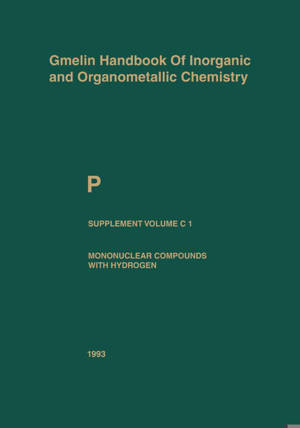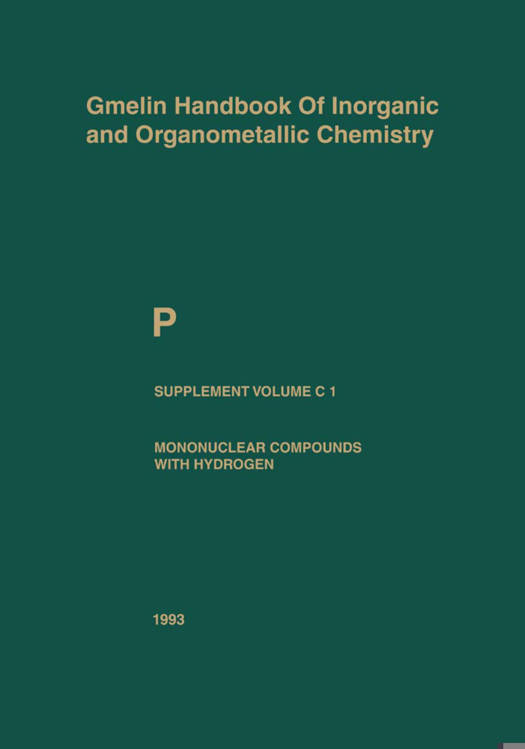
- Afhalen na 1 uur in een winkel met voorraad
- Gratis thuislevering in België vanaf € 30
- Ruim aanbod met 7 miljoen producten
- Afhalen na 1 uur in een winkel met voorraad
- Gratis thuislevering in België vanaf € 30
- Ruim aanbod met 7 miljoen producten
Zoeken
P Phosphorus
Mononuclear Compounds with Hydrogen
Werner Behrendt, Ulrich W Gerwarth, Reinhard Haubold, Jörn V Jouanne, Hannelore Keller-Rudeck, Dieter Koschel, Hans Schäfer, Joachim Wagner
€ 93,45
+ 186 punten
Omschrijving
This volume C 1 is the first supplement volume to "Phosphor" C which was published in 1965 and covers the compounds of phosphorus. Starting with the binary species formed between phosphorus and hydrogen, the present volume deals with the neutral mononuclear compounds PH through PH; the ions featuring the same stoichiometric composition are s covered in separate sections. PH and PH are the major initial gaseous decomposition products of PH and, thus, also 2 J intermediates in many of its gas-phase reactions. Both molecules and their ions have been thoroughly investigated by a variety of modern, high-resolution spectroscopic methods during the last three decades. The coverage of their physical, and mostly molecular, properties re- presents the largest part of the first two chapters (PH and ions pp. 2 to 47; PH and ions pp. 47 2 to 111). PH is the only compound described in this volume which is thermally stable under normal J conditions. It is the phosphorus analog of ammonia, but exhibits, however, a quite different chemical behavior towards most elements and compounds. The majority of its physical, and in particular spectroscopic, properties have been determined in great detail since the sixties, partially in regard to spectroscopic investigations of the atmospheres of the outer planets.
Specificaties
Betrokkenen
- Auteur(s):
- Uitgeverij:
Inhoud
- Aantal bladzijden:
- 326
- Taal:
- Engels
- Reeks:
Eigenschappen
- Productcode (EAN):
- 9783662088494
- Verschijningsdatum:
- 3/10/2013
- Uitvoering:
- Paperback
- Formaat:
- Trade paperback (VS)
- Afmetingen:
- 178 mm x 254 mm
- Gewicht:
- 603 g

Alleen bij Standaard Boekhandel
+ 186 punten op je klantenkaart van Standaard Boekhandel
Beoordelingen
We publiceren alleen reviews die voldoen aan de voorwaarden voor reviews. Bekijk onze voorwaarden voor reviews.








